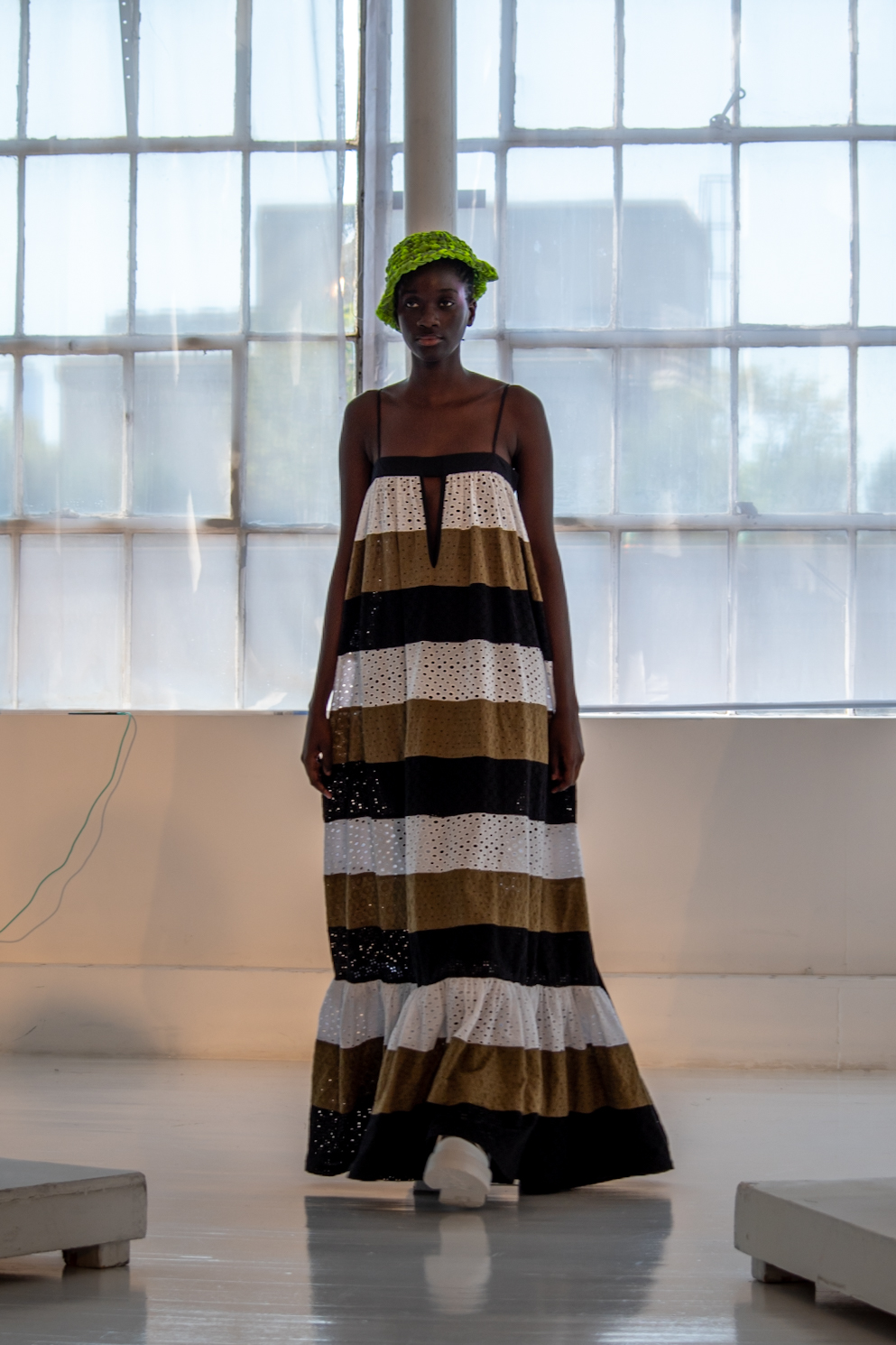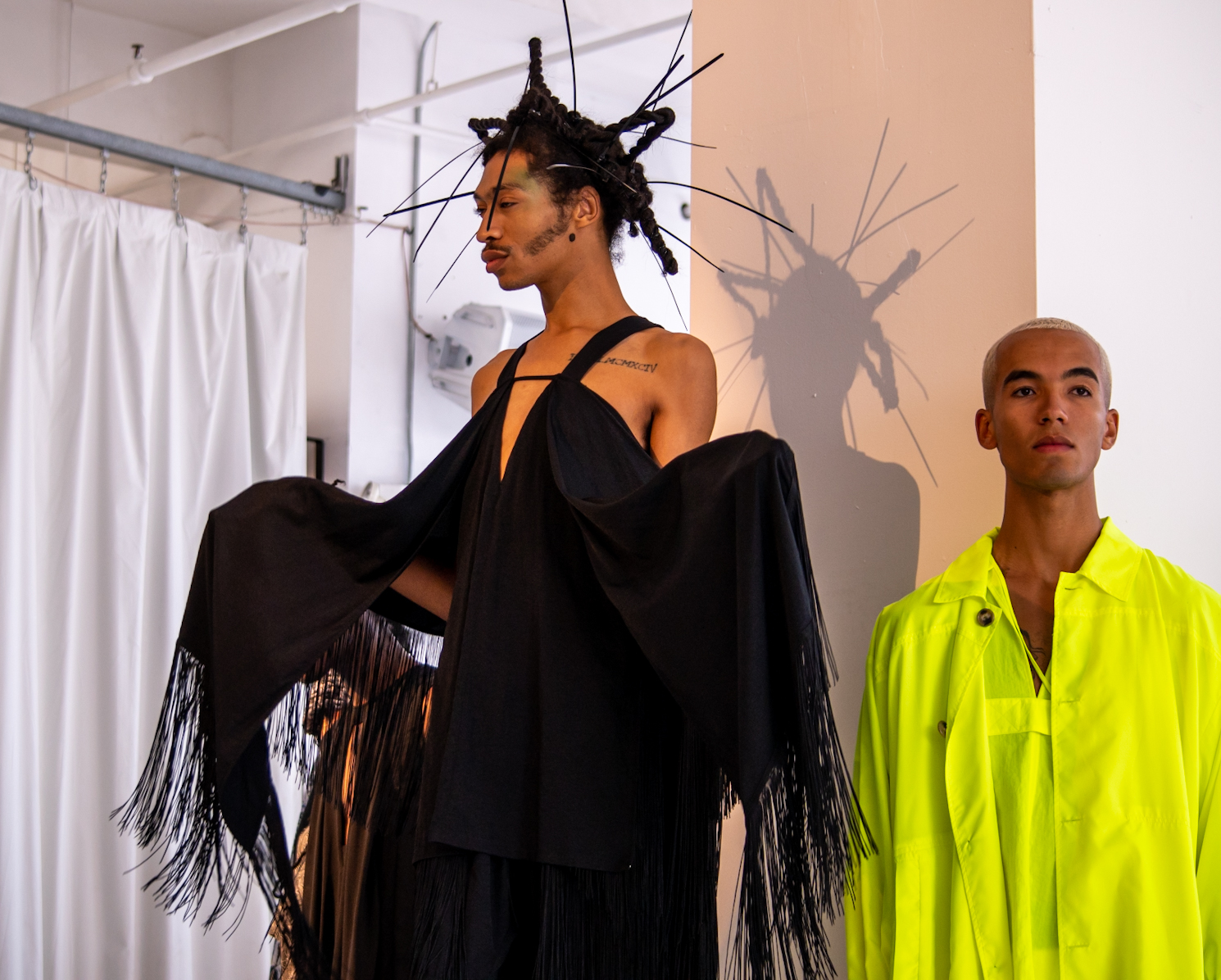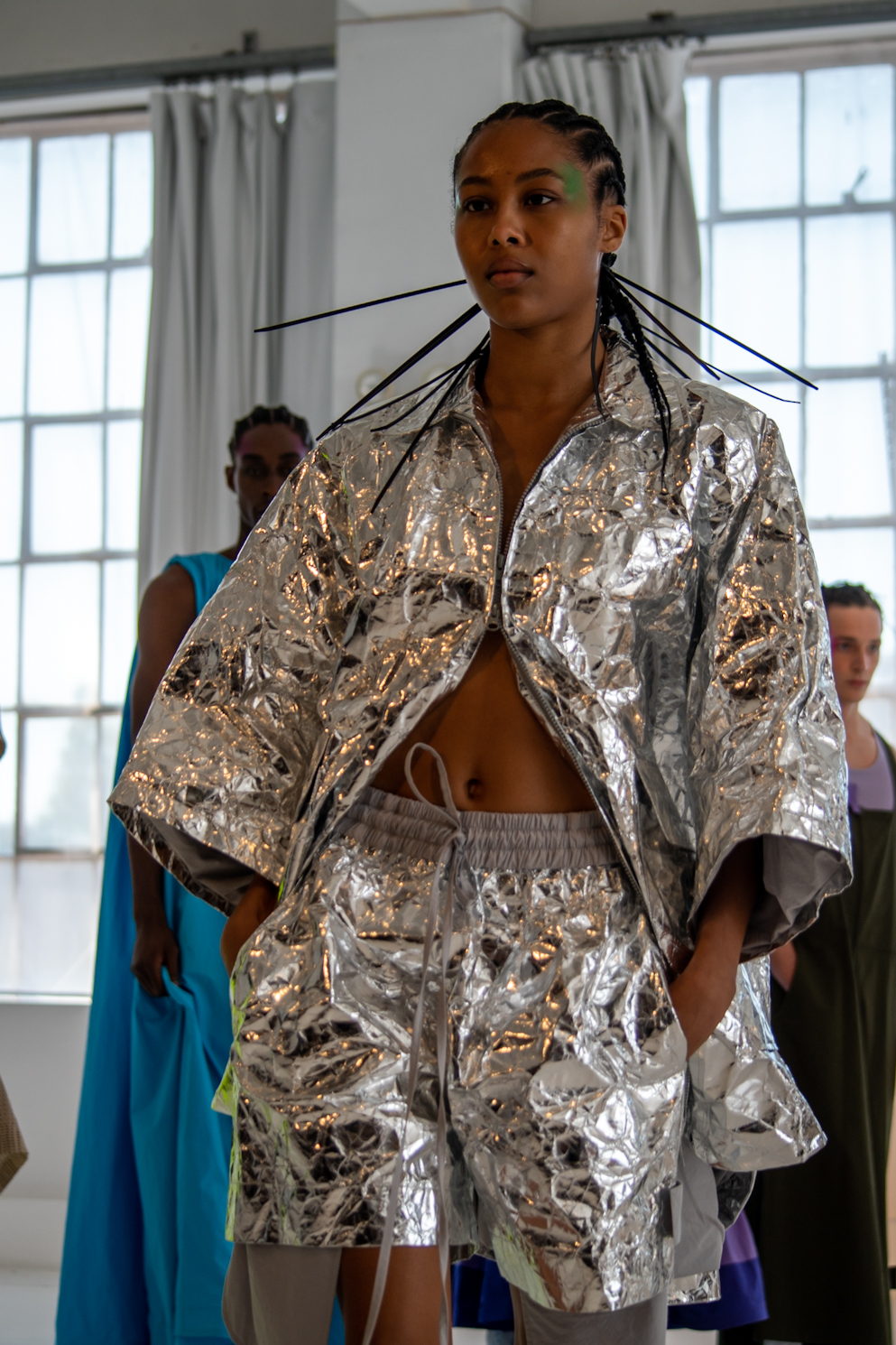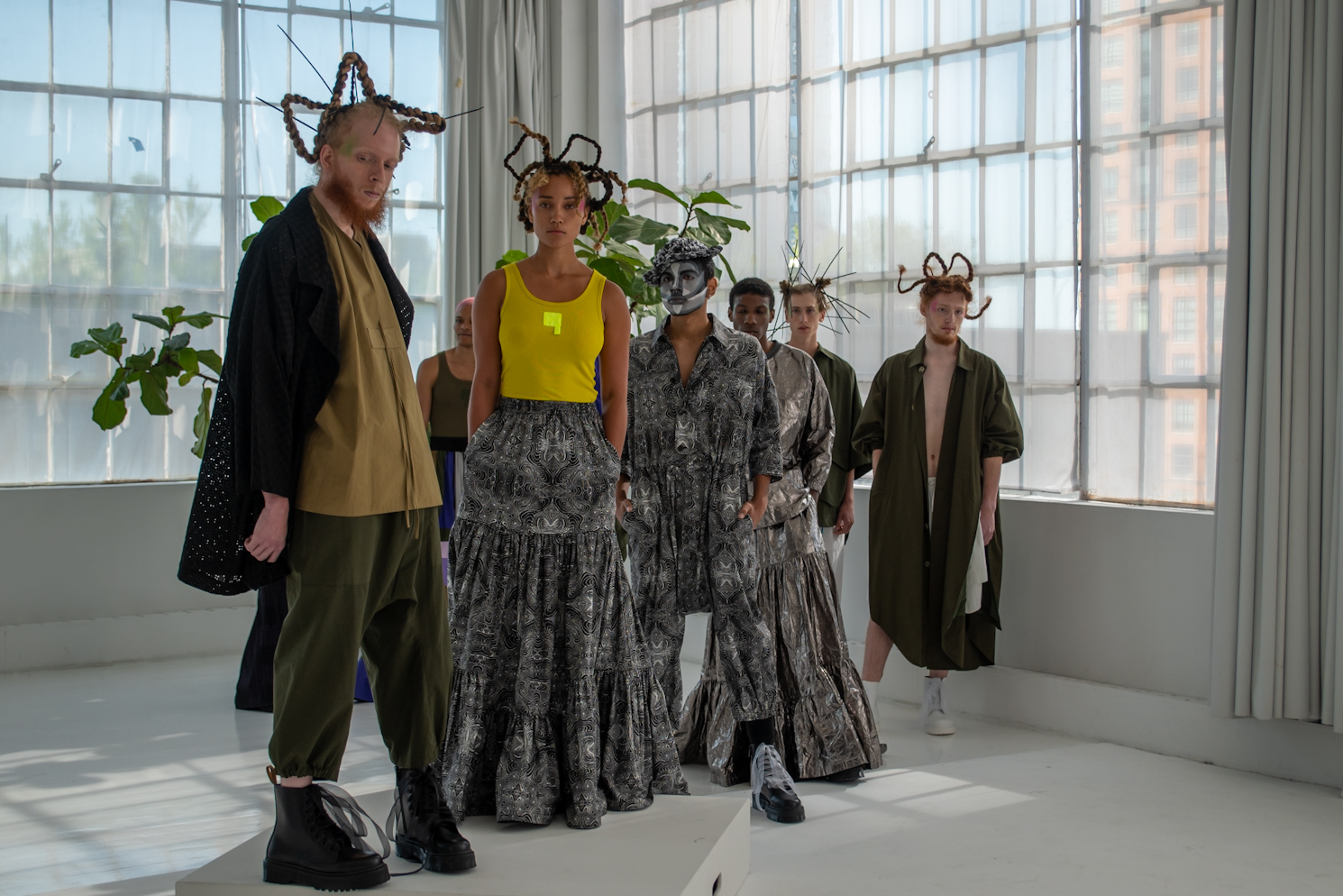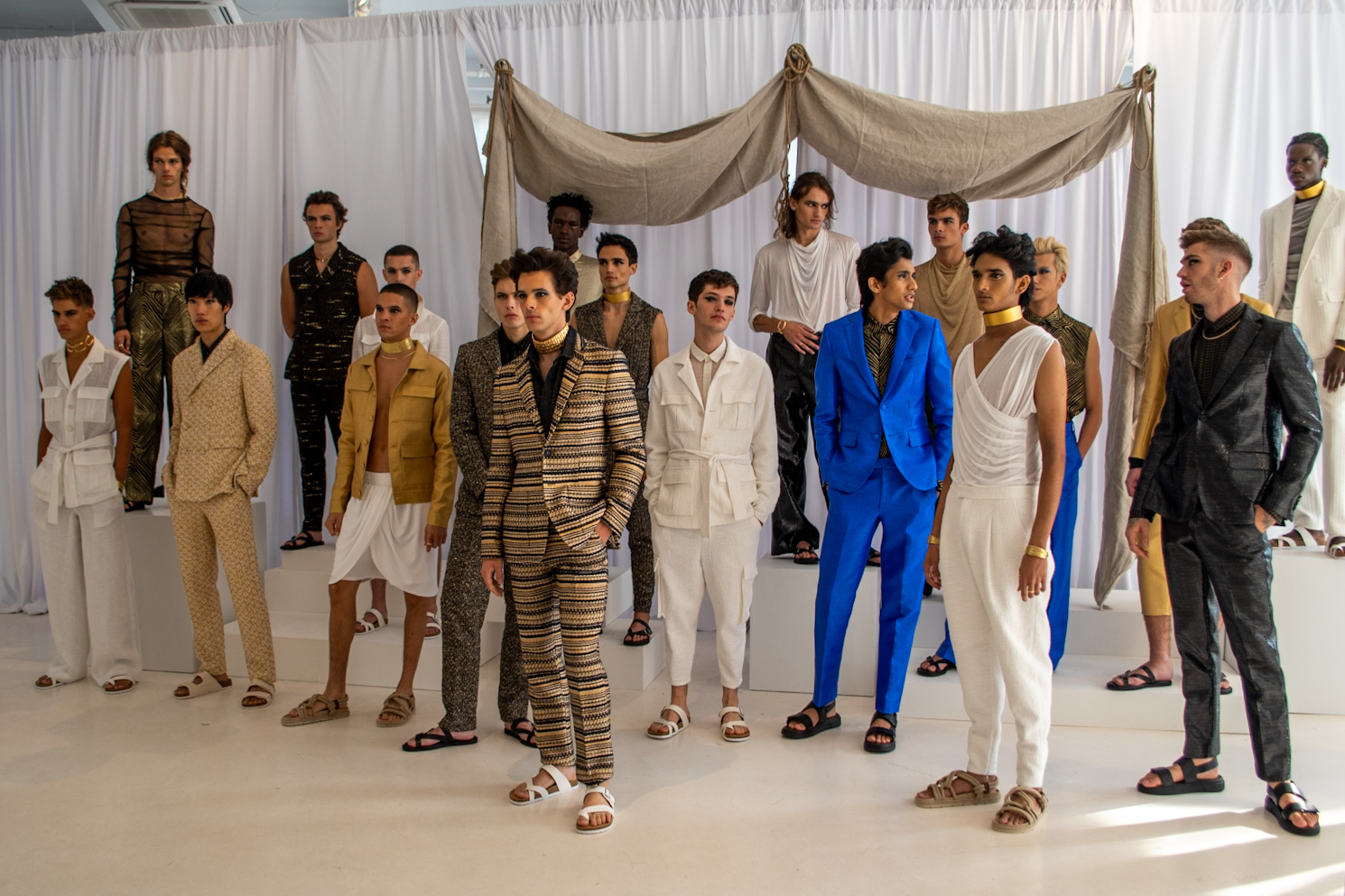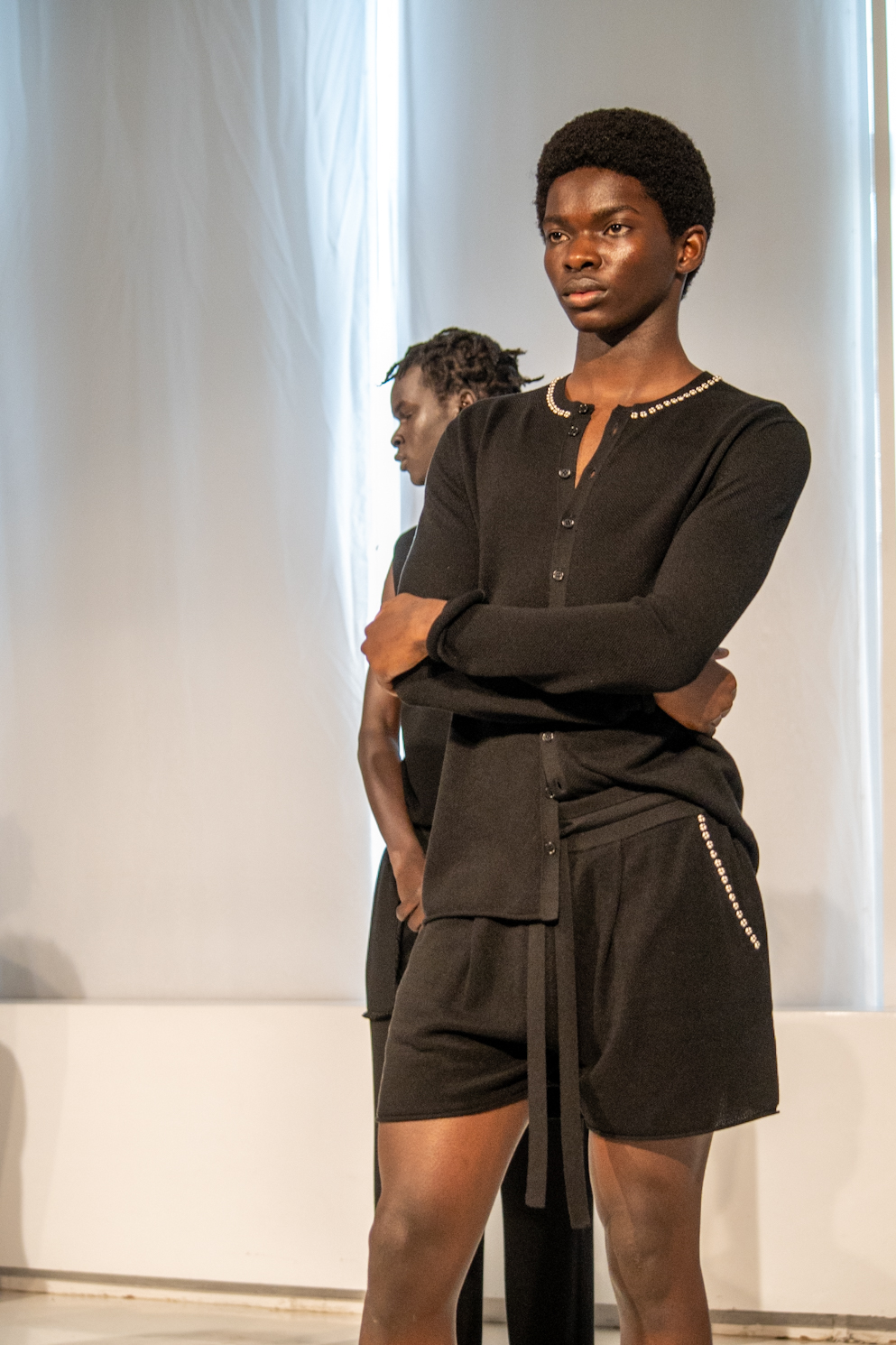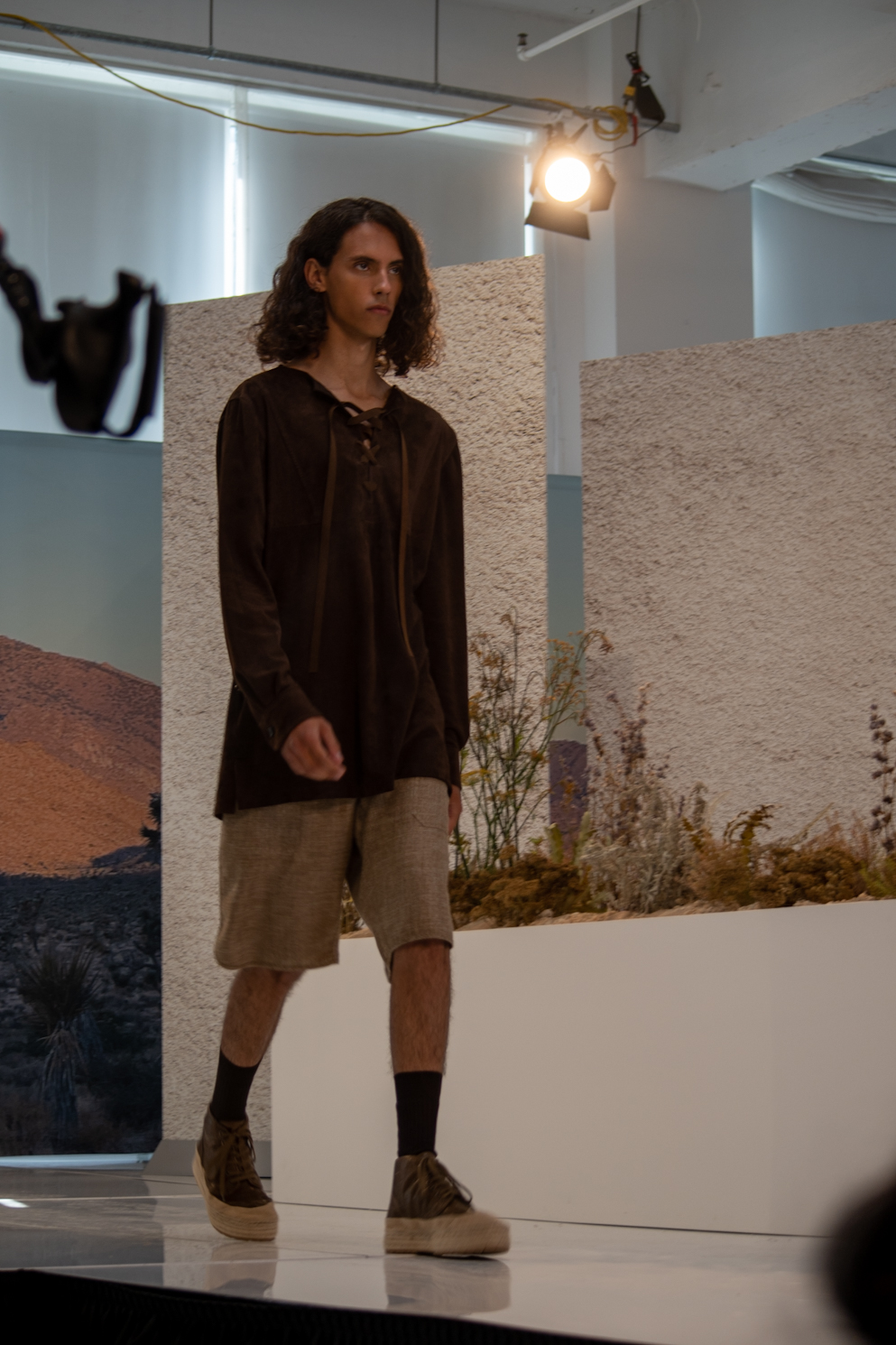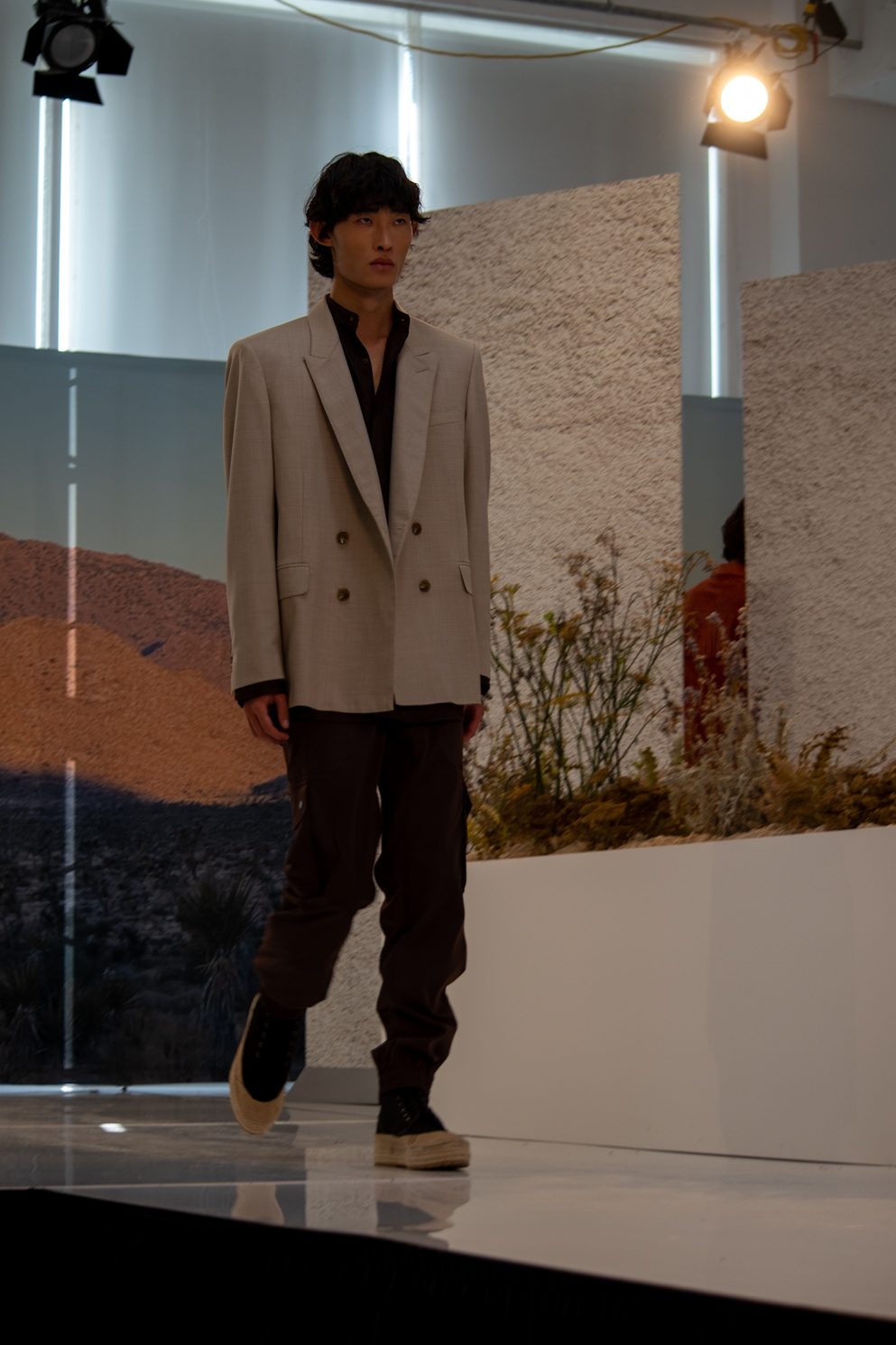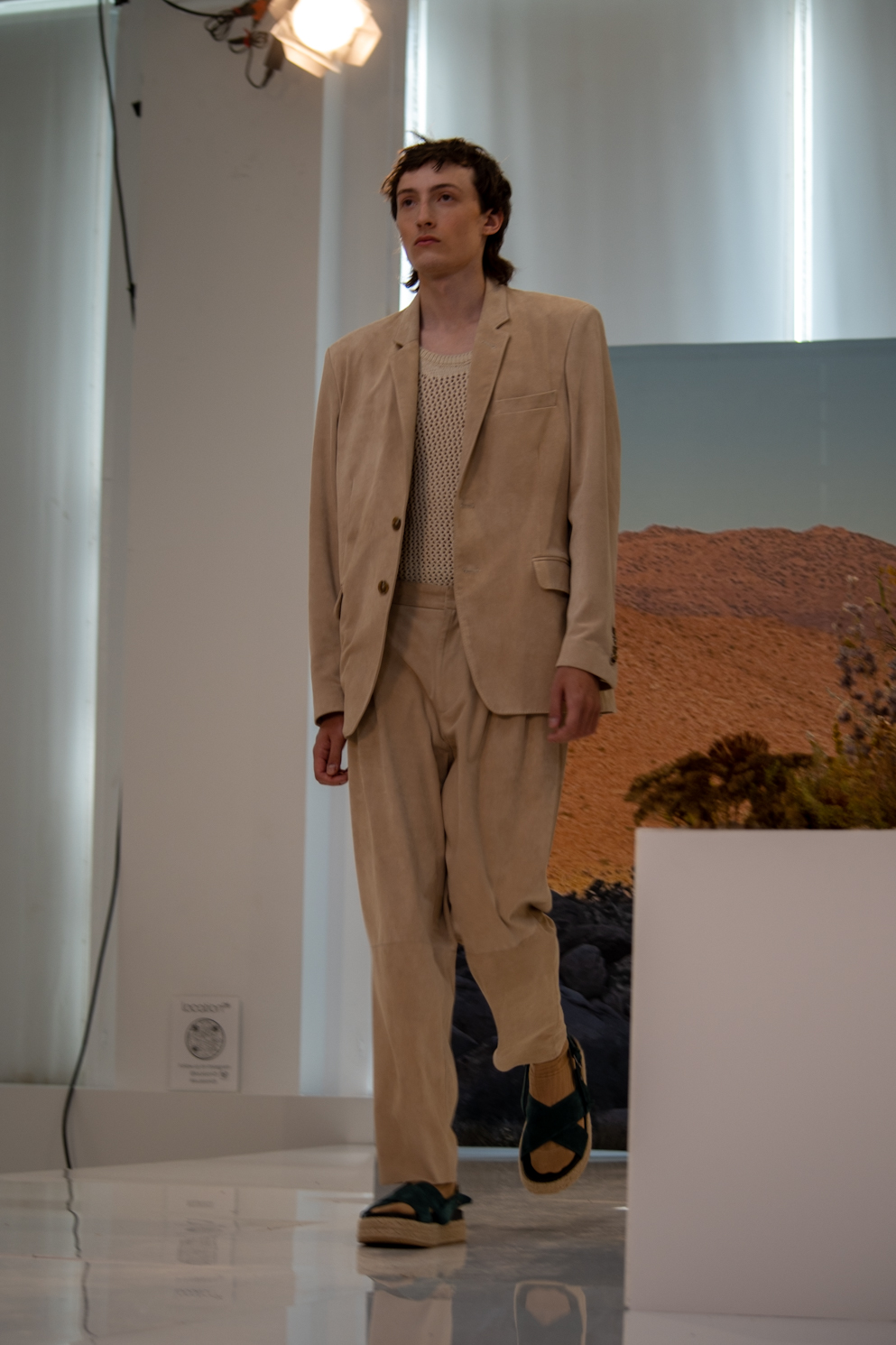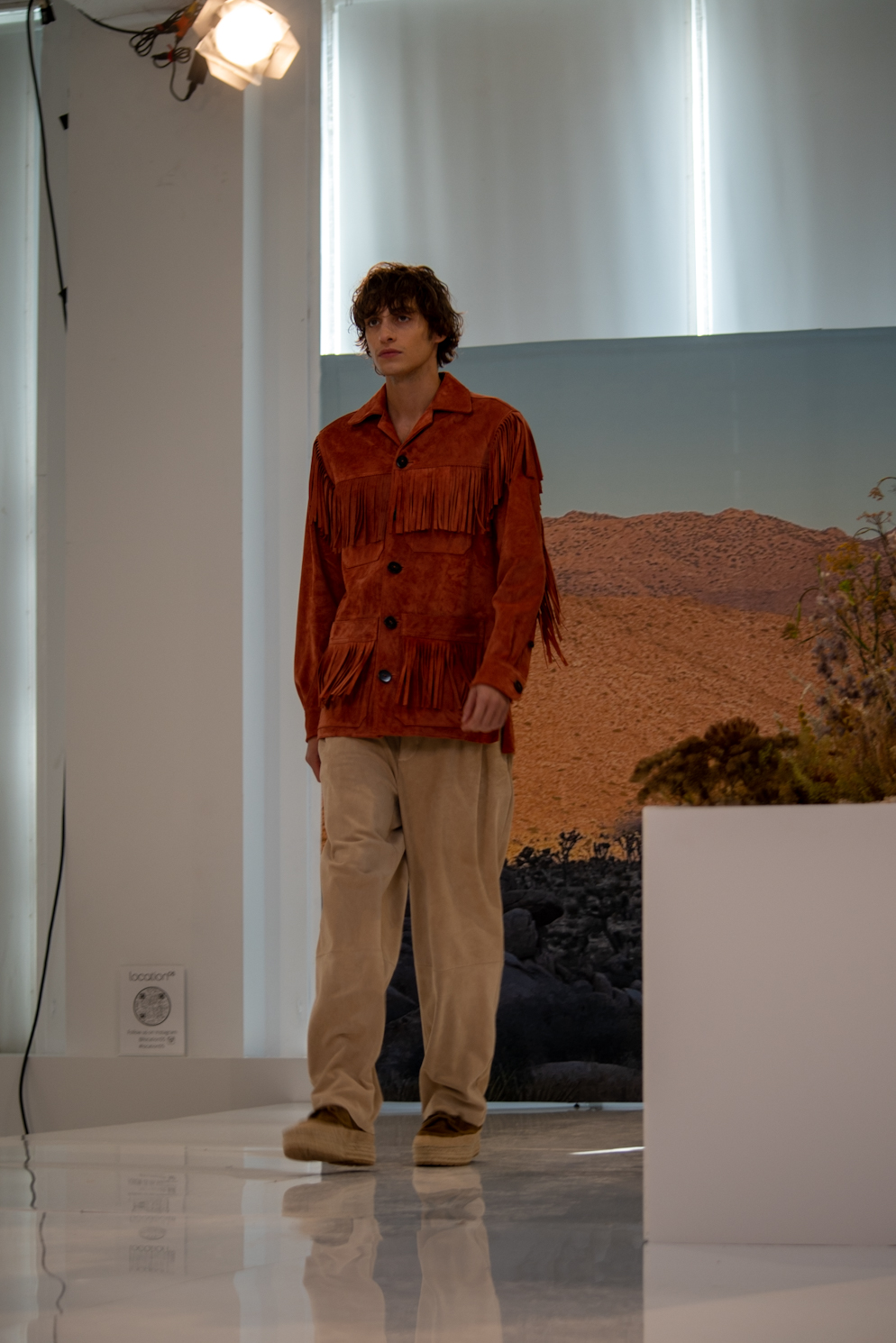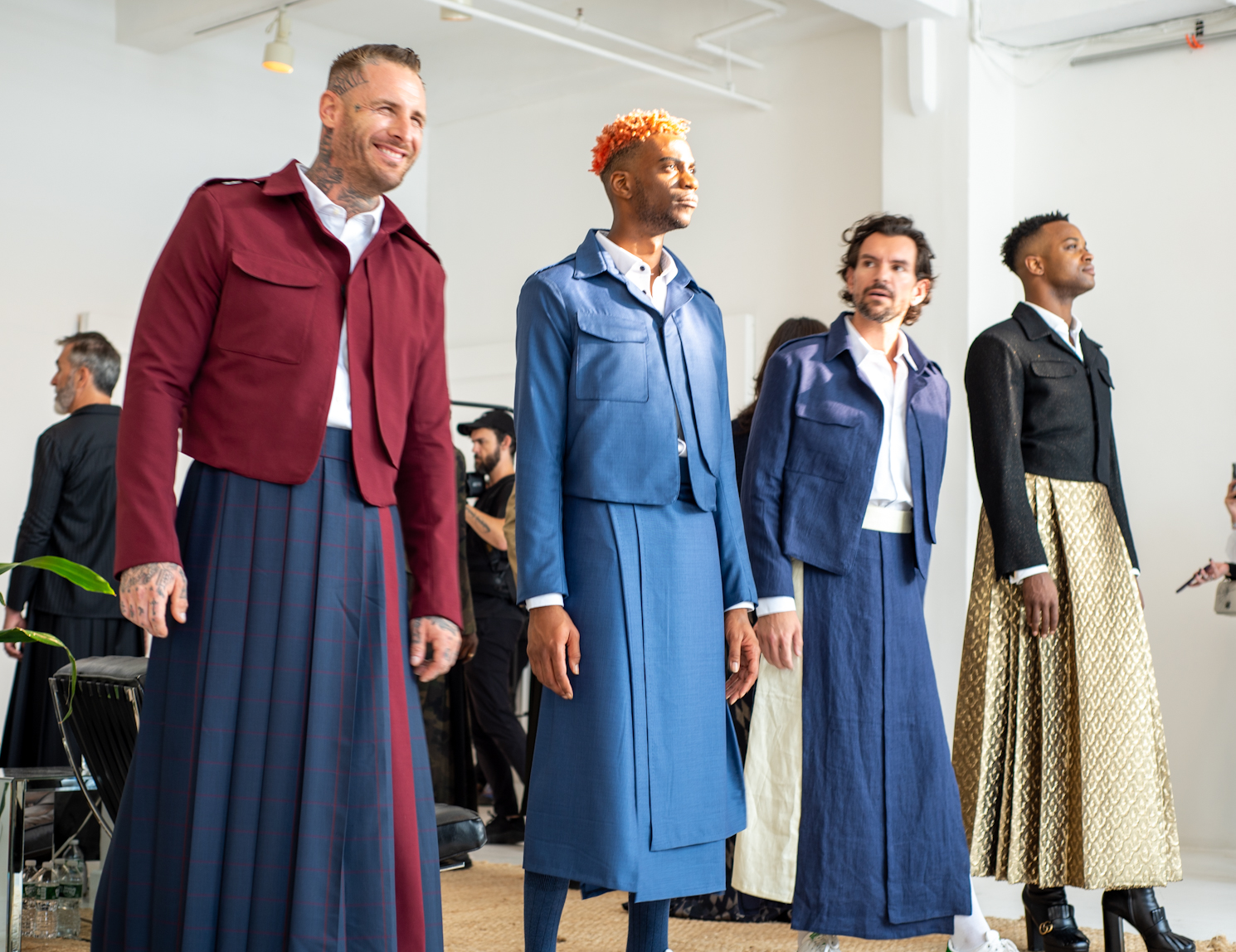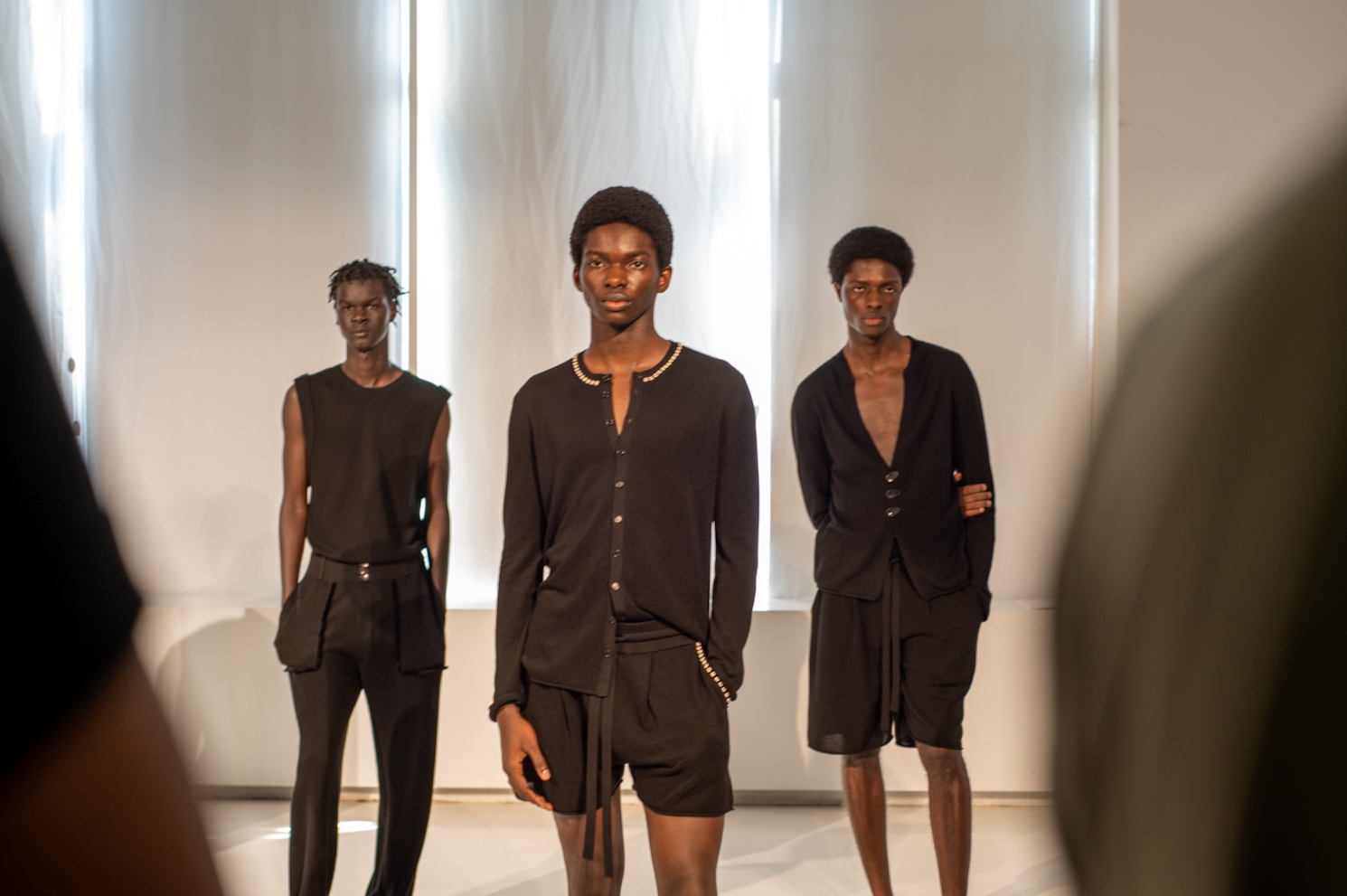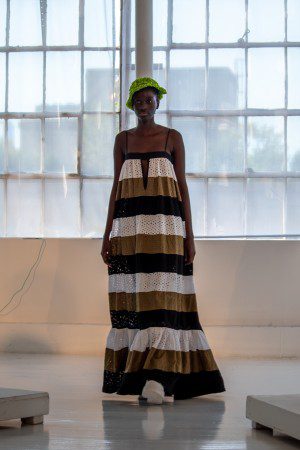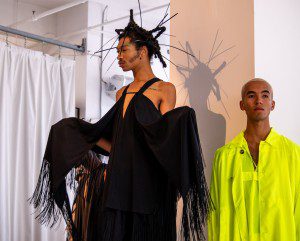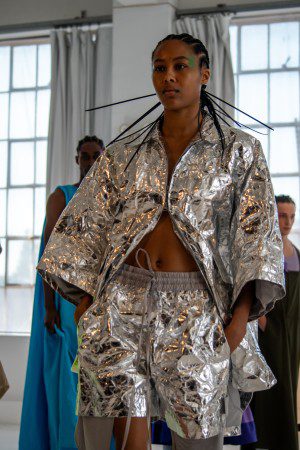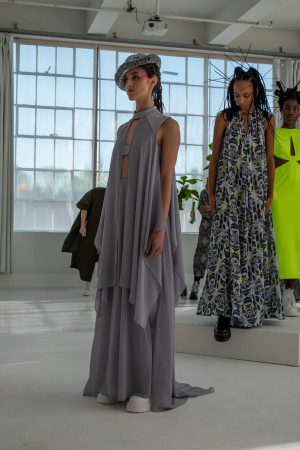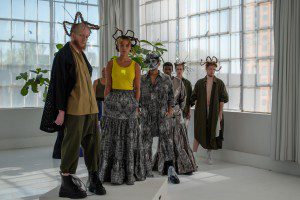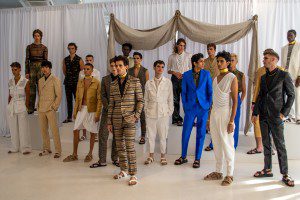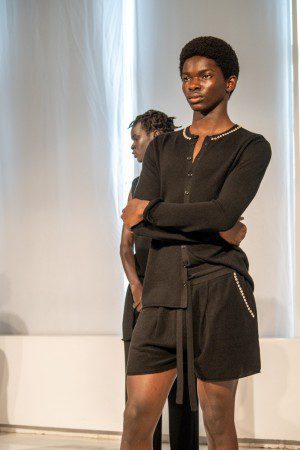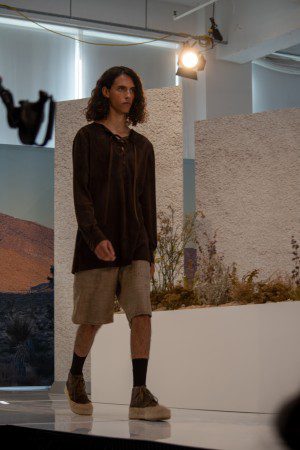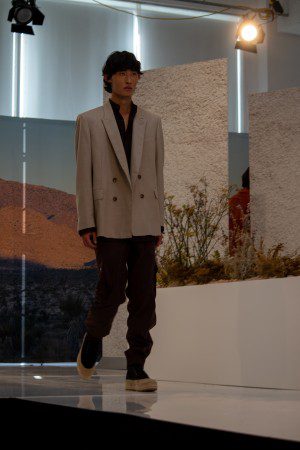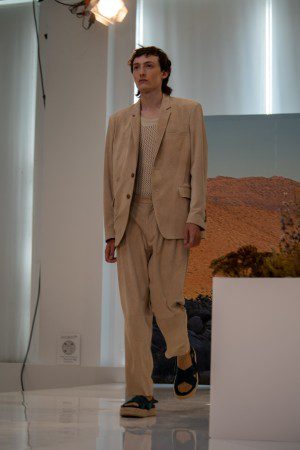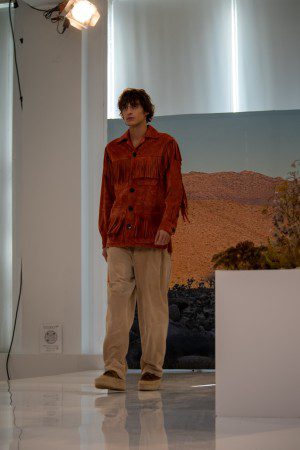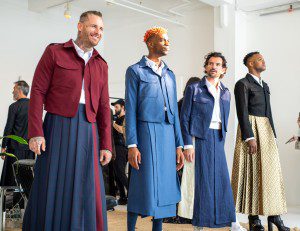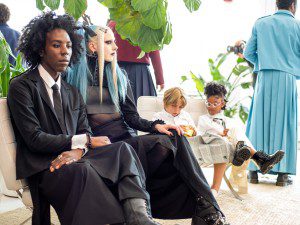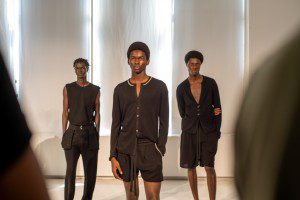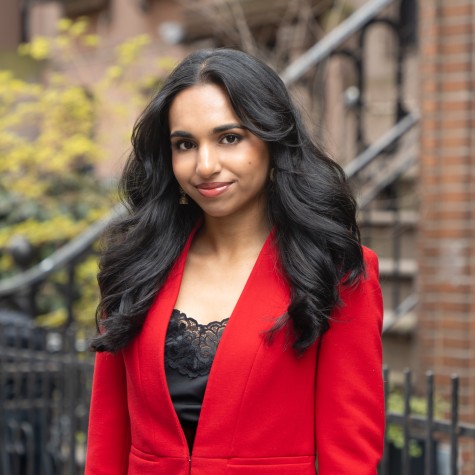Emerging menswear finds footing at New York Men’s Day
Gender-expansive treatment of clothing on menswear runways leaves little to be desired.
September 13, 2022
Mounting momentum for both bolder and more varied looks in the menswear market, the opening showcase of New York Men’s Day goes beyond rigid conventions. Held over two sessions across several floors at Daylight Studios for New York Fashion Week on Sept. 9, the event displayed a sprawling exhibition of presentations, with emerging labels in the menswear and genderless categories.
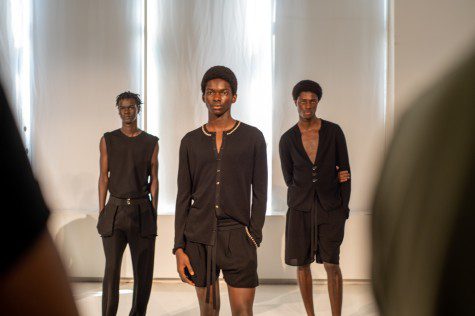
AMIROK, a knitwear startup, offered a small but cohesive assortment of wearable looks in elegant, black silk. The lightweight vests and cardigans, paired with similarly breathable drawstring shorts and trousers, were delicately knit for warmer weather. Textural elements like unfinished seams and shell-like appliqués offered an element of ruggedness that complimented the collection’s functionality.
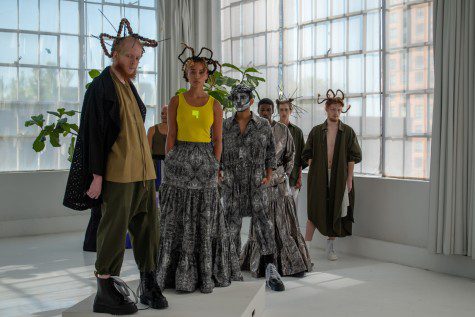
Perhaps less sensible were the high volume pieces of unisex label, APOTTS. This season’s collection, dubbed “HIDING THE HORIZON,” looked to “angels against earthly elements” for its inspiration. Fabrics indeed appeared to float from the models’ frames, but the outsized tunics and jumpsuits presented a silhouette that was more shapeless than ethereal. Neon hues, fringe and psychedelic prints were evocative of standard festival wear and its mundane approach to escapism.
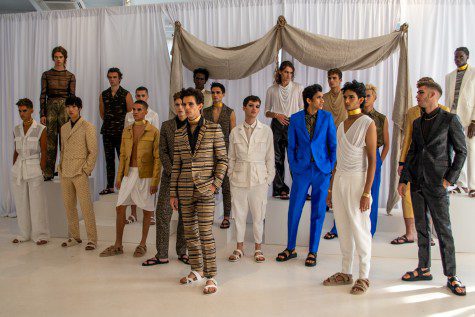
Less abstract in its inspiration was Atelier Cillian, which looked to King Tutankhamun’s tomb for its collection, combining stylistic elements of both the ancient Egyptian royalty and that of the British archeologist who discovered the tomb in a clunky mashup of blatantly obvious references. Distinctly feminine details like draped and sleeveless tops in sheer fabrics are unflattering against the streamlined male figure, and even more stifling when matched with sartorial staples of traditionally tailored trousers and jackets. From cargo pockets that felt more dated than utilitarian to metallic fabrics that were more gaudy than opulent, the garments struggled in terms of taste. Styling choices like gold cuffs and eye kohl were so obviously Egyptian that the looks veered on the verge of costume and added to the overall sense of garishness.
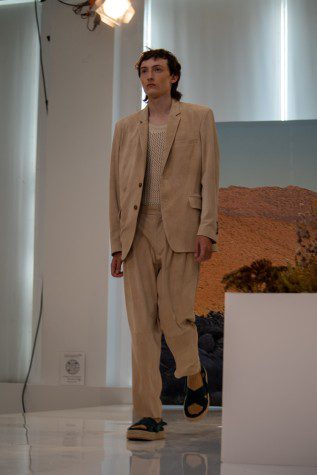
Teddy von Ranson also considered the desert in the development of his collection, albeit in a contemporary notion. No stranger to its influence in his work, this season was specially informed by California’s Joshua Tree National Park. The desert is a sanctuary for von Ranson who takes refuge in its harmony of textures and hues. Earth tones grounded the various pieces all rendered in a distinctive boxy silhouette. Their versatility, yet cohesion, was impressive. Standouts included interpretations of typically downmarket favorites, such as the tie-dye T-shirts and the Baja hoodie.
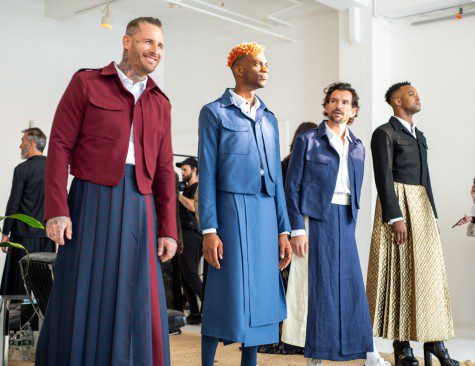
Terry Singh’s presentation was a family affair that included parents and their children in matching ensembles of floor-length skirts and military jackets. The format was not repetitive, but rather effective in its proposition of a new everyday silhouette. The idea of evolving everyday dress was on the mind of Singh, who explained the concept in practical terms.
“I’m interested in changing the perception of the family structure through the idea of a garment being passed down from parent to child,” Singh told WSN.
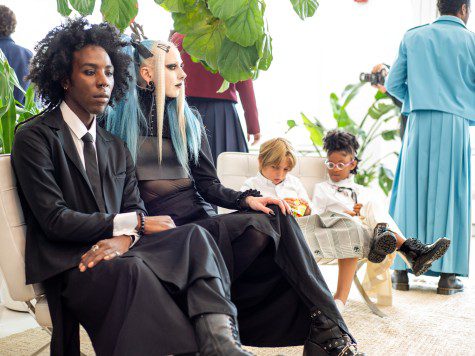
NYMD is undoubtedly most successful when it tackles innovation in practical terms rather than trying to rework the fabric of menswear altogether. The question remains whether these new challengers to menswear can continue to balance inclusive designs and garment functionality.
Contact Chad Evans at [email protected].























































































































































